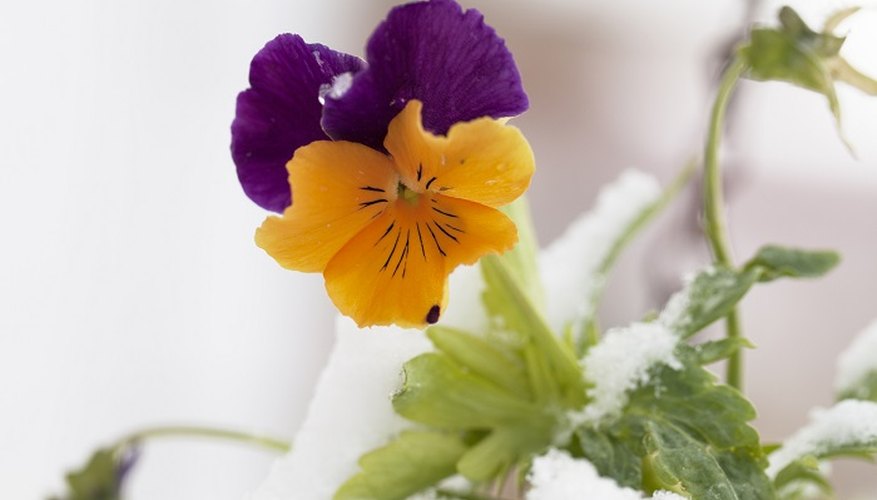Pansies are staples in many gardens. These flowering annuals provide colour and beauty when few other flowers do: in the autumn and sometimes in the winter. Pansies are hardy plants and will survive a frost. However, they will not survive hot and dry summers, which is when most pansies die off.
Effects of frost
Pansies are not affected much by frost. Depending on how hard the frost was and your pansy variety, any flowers that were blooming may wither, but the plants will stay alive. And, if your pansies have buds on them, they usually fare well after a frost and will still continue to bloom. Pansies are known to bloom and thrive through late autumn and sometimes into early winter until the first hard freeze, and will bloom again in the early spring, even with regular frosts.
- Pansies are not affected much by frost.
- Depending on how hard the frost was and your pansy variety, any flowers that were blooming may wither, but the plants will stay alive.
Winter hardiness
Pansies are extremely cold hardy compared to most other flowering annuals, especially cultivars such as Polar and Icicle. Pansies can survive winters where temperatures sometimes dip well below zero. However, in these extremely cold climates and where snow coverage is usually heavy during the winter, there is a chance pansies could die. Simply apply about 5 cm of mulch, such as straw or leaves, and your pansies will likely survive.
- Pansies are extremely cold hardy compared to most other flowering annuals, especially cultivars such as Polar and Icicle.
- However, in these extremely cold climates and where snow coverage is usually heavy during the winter, there is a chance pansies could die.
When to plant
Pansies are typically planted in the autumn or early spring. Many gardeners are hesitant to plant pansies in the autumn, but many cultivars were specifically bred for planting at this time, such as the Polar and Icicle varieties. Pansies begin to flower when night time temperatures reach 4C and day time temperatures reach 16C. This makes them one of the earliest flowers to appear in the spring. You can also plant pansies in the early spring.
- Pansies are typically planted in the autumn or early spring.
- Pansies begin to flower when night time temperatures reach 4C and day time temperatures reach 16C.
- This makes them one of the earliest flowers to appear in the spring.
Tips for autumn planting
It's OK to plant flowering pansies in the autumn. Some of the flowers may wither after a heavy frost, but they are likely to bloom again and again until there is a hard freeze. Flowers will reappear in the spring and bloom all the way until late spring or summer. Plant pansies when soil temperatures are between 4C and 16C. Don't plant them when the soil is too warm or your pansies will be leggy, bloom less and have yellowish leaves. If you plant them when the soil is too cold, the roots will not have time to become established before winter and they probably won't survive. Apply mulch around your plants at planting time to help the soil conserve water and stay warm.
- It's OK to plant flowering pansies in the autumn.
- Plant pansies when soil temperatures are between 4C and 16C.
- Don't plant them when the soil is too warm or your pansies will be leggy, bloom less and have yellowish leaves.
